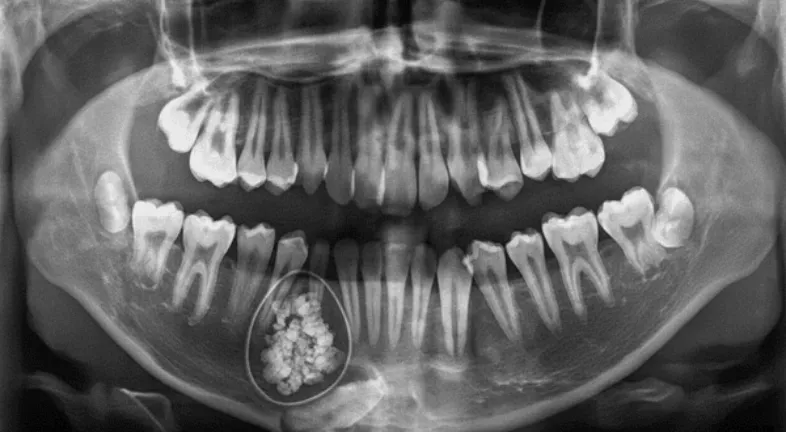
Clear aligners have turned out to be a better option than traditional braces for those who want to achieve a better bite and aesthetic appearance of their teeth. They are unnoticeable, removable, and have the possibility to give good results for most people. However, like all orthodontic treatments, they come with different side effects – one of the most common being that some people experience sensitivity in their teeth. Clear aligners can provide an incredible solution for patients for teeth straightening, but sometimes they can cause sensitivity. Now let’s talk about what leads to the sensitivity of the teeth and how to maintain comfort during the clear aligner treatment process.

Dental sensitivity is described as a sharp, short pain that arises from your teeth to certain stimuli such as cold, heat, pressure, or particular food and beverages. Most of the users of clear aligners develop sensitivity during their treatment, particularly if they adjust from one aligner to the next. But why does this happen?
This sensitivity is usually short-lived and tends to decrease after a few days with each new aligner. However, it can be uncomfortable, so finding ways to manage it is important for a smoother treatment journey.
It must be noted that levels of sensitivity to clear aligners do vary from one person to another. In fact, sensitivity levels can vary greatly depending on a few key factors:
If you’re dealing with sensitive teeth while using clear aligners, don’t worry as there are useful and efficient solutions to ease the discomfort. Here are some tried and recommended tips for reducing dental sensitivity:
You can also have sensitivity from using normal toothpaste and even from eating and drinking. You need toothpaste for sensitive teeth specifically as these toothpaste contain additives like potassium nitrate or stannous fluoride that decrease the impact on teeth directly, calm the nerves, and mitigate the discomfort gradually over time.
A soft-bristled toothbrush has softer bristles compared to the standard toothbrushes and does not exert much pressure on the teeth and gums. Your enamel is weakened by the hard bristles of toothbrushes which causes sensitivity and this actually leads to further sensitivity during clear aligners treatment.

Extreme temperature changes can trigger sensitivity when your teeth are already feeling tender from the pressure of aligners on the teeth. We suggest avoiding hot and cold foods for sensitive teeth in the first few days after, especially when switching trays so it can help prevent sudden discomfort.
If you or any of your teeth or gums are sensitive to cold or have swollen, using a cold compress will help in that area to numb and reduce inflammation. Cold compresses are most effective when used right after the aligner change because people are most uncomfortable at that time.
One common technique to minimize discomfort when switching aligner trays is to start wearing them at night. This allows you to sleep through the first few hours of adjustment, which is when discomfort and sensitivity are usually at their highest.
It is advisable to avoid hard or crunchy foods that can exacerbate sensitivity during the initial days of wearing a new aligner. Sticking to softer foods can help minimize discomfort.
Dental sensitivity is rarely permanent, especially with clear aligners and it is usually triggered only in the initial days of wearing a new tray. Additionally, the period of sensitivity may be different due to the difference in the pain threshold as well as the speed of tooth movement, as well as care techniques that help control it.
The first few days when a person changes from one aligner tray to the other is normally when they feel the most irritated. In these initial days, there is every possibility to feel sensitivity which can be described as a sharp, throbbing, or aching feeling while swallowing food and drinks.
Sensitivity usually subsides following the first several days’ use of every new tray; however, some individuals continue to notice minor discomfort during their entire treatment. It is normally treatable when there are specific care measures taken against something similar like using toothpaste for sensitive teeth, getting a dental checkup, and being conscious about what one eats.

Managing dental sensitivity during clear aligner treatment is often a balance of good habits and gentle care of the teeth. Here are some more tips that can make the entire treatment journey smoother:
If sensitivity becomes particularly too unbearable for you, over-the-counter pain relievers, such as ibuprofen or acetaminophen will be of great help. But it’s better to consult with a dentist or orthodontist before going for such pain relievers. These medications will reduce inflammation and will provide you with some relief, especially during the first few days after switching to a new tray.
If you have salt water you can try gargling it to ease your sore gums plus the irritation you may be experiencing. This rinse is also a basic and effective solution for anyone going through aligner treatment and facing higher sensitivity of their gums.
One can also avoid the formation of plaque which leads to worsening of sensitivity due to inflammation of gums and teeth. If you want to be comfortable when undergoing a clear aligner treatment then it is very important to maintain oral hygiene.
Use of clear aligners may cause mild sensitivity, but prolonged or severe discomfort should not be ignored. No discomfort or pain should persist for more than a few days with each new aligner tray, or become progressively worse, in which case it’s wise to contact your dentist or orthodontist.
Sensitivity may be an indication of problems such as enamel erosion, cavities, or ill-fitting aligners. Sometimes your dentist may modify the discussed treatment plans or suggest extra preventive steps.
Continued sensitivity to hot or cold can be addressed by the dentist with topical applications of fluoride, the usage of desensitizing paste or gel, or alterations made to the aligner trays to guarantee a proper fit.
Clear aligners are an excellent choice for achieving a straighter smile, but managing sensitivity can be a key part of a comfortable treatment experience. While it’s common to experience some discomfort, especially with each new tray, small changes to your routine can help you handle it. From using sensitive toothpaste and soft-bristled brushes to rinsing with salt water and choosing soft foods, these methods help ease discomfort and make the process easier.




Curated the best for your knowledge
 Odontomas: What They Are and How They're Treated
Odontomas: What They Are and How They're TreatedSome dental conditions are quiet. Too quiet, in fact. Odontomas fall into that category. They rarely make noise, yet they change things beneath the surface. And people usually have no idea about them. While malocclusions, teeth shifting, discoloration, or other cosmetic dental issues are fairly well known, odontomas are not. So, an odontoma is technically a type of tooth tumor. It’s benign, harmless, but oddly structured. Hence, it can interfere with tooth eruption, displace teeth, or cause swelling. However, there’s more to it. Here’s a deeper dive.
Read More.webp) Gingivitis Treatment: How to Reverse Early Gum Disease
Gingivitis Treatment: How to Reverse Early Gum DiseaseGingivitis tends to creep up quietly, usually after a stretch of rushed brushing or nights where flossing just slips your mind. The first sign is often bleeding when you spit toothpaste into the sink. That moment makes people Google how to cure gingivitis, which is honestly the right instinct. Early gum inflammation happens because plaque irritates the tissue around the teeth. If you respond quickly, it is fully reversible. Most cases improve quickly with proper cleaning, hydration and small tweaks in daily habits. The key is not ignoring those early red or puffy gum signals.
Read More.webp) Metallic Taste in Mouth: Causes and How to Get Rid of It
Metallic Taste in Mouth: Causes and How to Get Rid of ItHaving metal taste in the mouth first thing in the morning can be an unexpected experience. You wake up, take a swallow, and suddenly have a metallic taste in your mouth, as if you'd been chewing on a handful of change. It's annoying, a little scary, and sometimes for no apparent reason. For some people, it will be nothing but a minor nuisance; others may fall into the late-night goose chaser. Sometimes it's a sign that there is something wrong with your braces; other times, it could mean that there is something wrong with one of your teeth. But here's the good news: Most metallic tastes are temporary, harmless, and can be treated or resolved. So let's take a closer look at the possibilities.
Read MoreQuick Links

Heading